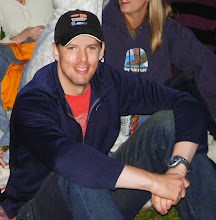It’s been a while since I wrote my last blog. The last parts of January through March have been overwhelmingly busy months for me. On top of my normal 9-5 job I finished off my application for Princeton Seminary and worked on my syllabus for this upcoming quarter. Fantastic news though, I received an acceptance letter from Princeton just this last Saturday. So I will be attending Princeton Theological Seminary this upcoming fall! If anybody has loads of cash just lying around they might consider helping me figure out how I’m going to pay for it all by providing a nice donation to me. Don’t have loads of cash? If you know of any good scholarships please feel free to point me in their direction. In the mean time I’m about to start my spring quarter of teaching. The class I’m teaching is focused on interactive narratives and motion graphics. I plan on introducing students to some literary criticism and especially narrative criticism. Mark Goodacre over at NTGateway wrote an insightful article here on “The Passion of the Christ” that help cement in my mind the link between literary criticism and interactive media. Since I’m working on getting my notes together I’ll be posting on literary criticism in the next few weeks so long as my time doesn’t get swallowed by scholarship searches and application on top of school and work.
Literary and Narrative Criticism - Part 1
Before digging into some of the specific of narrative criticism I wanted to give a quick look at the history of literary criticism and how it has interweaved with Biblical studies. Most of what follows comes from the book I'm using to prep for class, Mark Allen Powell's "What is Narrative Criticism?" in the Guides to Biblical Scholarship Series by Fortress press. I highly recommend it. It's short and very succinct.
Literary criticism most broadly defined is the study and evaluation of a work of literature. It is seen as early as Aristotle in his book Poetics where he dealt with narrative and dramatic structure. Literary Criticism has been given increasing attention along side of, and even in place of historical and form criticism within the field of Biblical studies recently. The latter two forms of criticism Hans Frei argued in 1974, failed to take seriously the narrative structure of the Gospels. (1 Powell, Mark Allen “What Is Narrative Criticism?”) In 1969 William A. Beardslee suggested that literary approaches to the Bible were much needed in light of much of the historical criticism that had gone on recently before him. Many current scholars have taken this advice and pursued historical Jesus research with this additional tool. Dominic Crossan, and Robert Funk are two names that stick out for their work on the literary nature of the parables. Literary criticism is also a striking feature of New Testament heavy weight NT Wright’s Magnus Opus Christian Origins Series.
There are many different forms and levels of literary analysis. Freytag’s approach is an example of a relatively simple literary analysis. (2 Freytag Techniques of Dramas) Time and Plot are plotted along different axis with the three major elements of a story represented (Desis, or the rising action and complication, Peripeteia, the climax and crisis, and finally Denouncement, falling action and unwinding). A more complicated approach to analyzing a narrative could be seen in the structuralism of A.J. Greimas. Richard Hays’ work on the narrative structure of Paul’s letters employed Greimas method. Hays’ work has been deeply influential in the world of New Testament studies.
Different types of literary analysis can be categorized according to its focus. Expressive types of criticism are author centered and evaluate the sincerity and adequacy of a writer. Historical Criticisms would fall under the category of Expressive and Mimetic. Mimetic types of criticisms focus on the truth of a work of literature in relation to the outer world. Pragmatic and Objective approaches are what have grown in recent years with biblical studies. Pragmatic approaches focus on the reader and the effect a text has on a reader, rhetorical criticism and deconstruction are examples of pragmatic approaches. Objective approaches are text centered, analyzing content according to intrinsic criteria. Here structuralism and narrative criticism find their home.
Monday, March 17, 2008
Subscribe to:
Posts (Atom)
